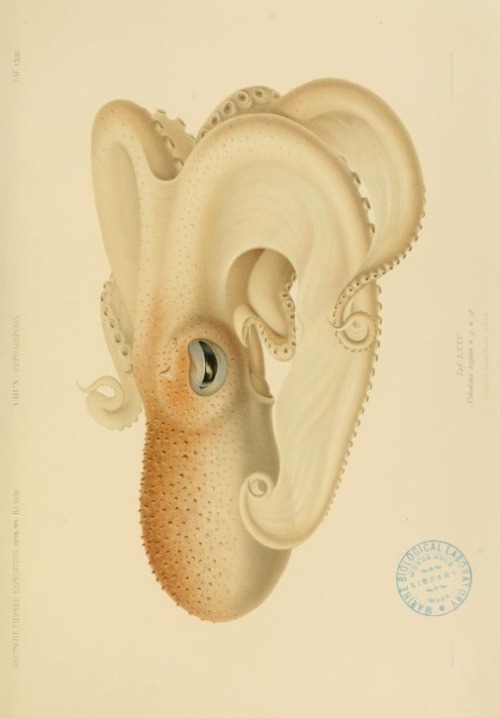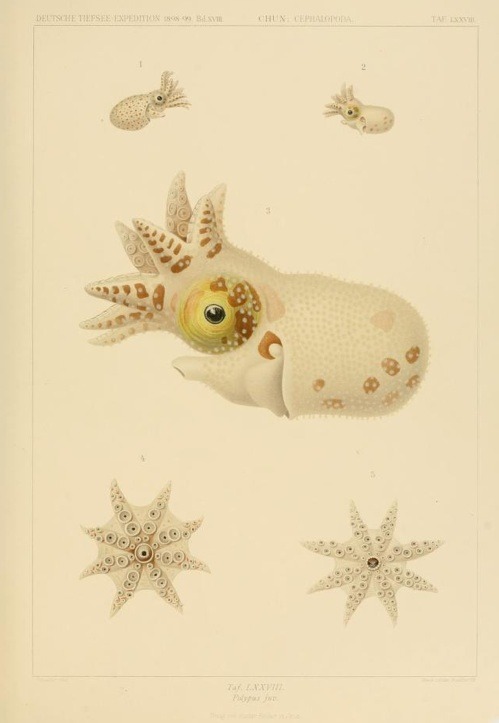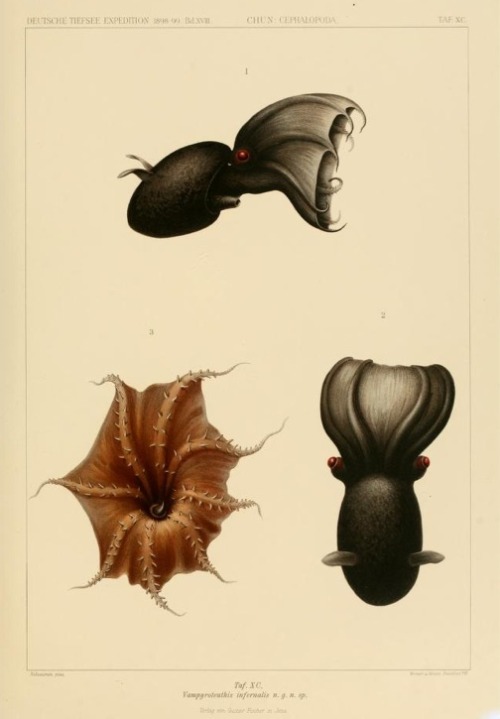Shared posts
Opinion: Well, Time To Go Out In Front Of A Bunch Of People And Lie To Them (by Jay Carney)
Boy oh Boy! Baby Gorilla Born at Columbus Zoo
Sam Rakercc Kathy
There's a lot of excitement at Ohio's Columbus Zoo over a brand new baby Gorilla, born on May 23, to Gorilla parents Kambera and Oliver. The little one arrived at at 3:22 a.m., weighing 5 pounds, a healthy weight for a newborn Gorilla. And it's a boy!
Kambera, being a first-time mom, displayed a lack of maternal skills, so the zoo's animal care experts are raising him in an environment that provides around-the-clock care and nurturing. They spend a significant amount of time close to Kambera with the hope of being able to reunite the baby with her in the near future. The baby has clearly done very well and is bright-eyed, healthy and energetic. Visitors can now see him daily from noon to 3 p.m. in the indoor Gorilla yard.
Gorillas live in moist tropical forests, or along the edge of forests, near clearings with an abundance of low, edible vegetation. Mountain gorillas range up into cloud forests.
Female gorillas reach maturity at seven or eight years old, but they usually don't breed until they reach ten plus years. Wild males tend to not breed before they are 15 years old, because there is greater competition between males to get with females. Gestation is close to human timing, taking about about eight and a half months, usually resulting in one baby. Babies can begin to walk around within three to six months, but take up until about three years old to be fully weaned. Zoo Gorillas may reach sexual maturity earlier, and have babies more often than they do in the wild.Gorillas also tend to live much longer in zoos -- up to their mid-fifties compared to the mid-thirties in the wild. Western Lowland and Cross River Gorillas are listed as critically endangered on the IUCN Red List of Threatened Species. Eastern Lowland and Mountain Gorillas are listed as Endangered on the Red List.
The street where you live
Sam RakerSkulk down to...Evil Avenue
The State of the Map conference is happening this weekend here in San Francisco. In honor of that, some facts about the world’s places courtesy of Open Street Maps enormous pile of data. We’ve been processing ~28,000,000 entries as part of named entity recognition (10,000,000 unique place names, but the conventions of the data mean that what is essentially one highway could be in there multiple times as it crosses various geographic boundaries).
- There are more 2nd Streets than 1st Streets (this is because in many places the “1st” street is known as the “Main” street). There are 2.8 times as many 2nd Streets as 2nd Avenues.
- Most numbers have a street or avenue associated with them: 1st, 2nd, 3rd…99th…237th…all the way up to 488th Street, then there start to be gaps (is there something wrong with 489th, 494th, 496th, and 498th streets?). The biggest hole is probably between 3200th Street and 4400th. Nowheresville is made up of those streets.
- Btw, Open Street Maps tells us there are Nowhere Roads in 10 different zip codes. But, uh, most of these are in the South. Actually, 5 of them are in Georgia.
- There are 11 times as many places with “Circle” in them as with “Square”. My favorite is probably ხალხთა მეგობრობის მოედანი (“Khalkhta Megbroba Square”, well, “Friendship Square” in Georgia. But the other Georgia. Isn’t Georgian script cool?)
- There are lots of tree streets: Oak, Pine, Elm, Maple, Walnut, Cedar, Chestnut, Cherry, Ash, Birch, Poplar. There are almost twice as many Willow Creeks as Willow Streets.
- There are quite a few Pleasant Streets. If that bores you, may I suggest Evil Avenue in St. Clair, Illinois? Or point you towards Mount Evil in Tennessee?
- Tyler Schnoebelen (@TSchnoebelen)
The post The street where you live appeared first on Idibon.
This Summer: Stop Buying $5 Iced Coffees
 It is summer. It is hot. Tomorrow is the first day of June, which means that you're contractually obligated to consume only cold beverages. Can I get you something to drink?
It is summer. It is hot. Tomorrow is the first day of June, which means that you're contractually obligated to consume only cold beverages. Can I get you something to drink?
ICED COFFEE
While the subject of iced coffee preparation is somewhat controversial, I am unafraid to come down squarely on the side of the cold brew preparation. Living in New Orleans made this my jam. Cold-brewed coffee (and tea) is less acidic, smoother, hella strong, and you don’t heat up your kitchen to make it. I also use way less sugar in cold-brewed iced coffee.
Now, you can buy a Toddy coffee maker or whatever, but that is not actually necessary. I once made a cold-brew concentrate in a Ziploc bag and brought it along on a road trip in a cooler. That was rad. It can be kind of messy, what with all the grounds, but if you have a French press, you do not have a problem.
You will need:
- A French press, if you have one. If not, you need some sort of glass, plastic, or stainless steel jar or pitcher or bowl with a lid. You will also need a fine-mesh strainer (or even a colander lined with paper towels).
- Coffee, coarsely ground (like a French press grind, if you use one at home)
- Water
- This Times recipe uses a ratio of one ounce of coffee : five ounces of water, so if you have a four-cup French press, you’d use 6.5 oz of coffee, or 3/4 cup + a skosh. (This is an inexact science, obviously.) Scale up or down accordingly. If you want to use an entire pound of coffee (and end up with eight cups of coffee concentrate, which will keep for two weeks in your refrigerator), use 10 cups of water.
Put the ground coffee and the water in your container. Don’t push the French press’s plunger down, if you’re using one. Refrigerate 8-12 hours, then strain, either with your French press or with your strainer. Now you have a concentrate that you can dilute with water and/or milk.
To serve, use 1/4 cup concentrate to 3/4 cup milk or water. (Extra milk makes it creamy-delicious, but also compounds the coffee poos, if you’re the sort who is susceptible to them.)
ICED TEA
Listen up, America. Nostalgia kills. Stop with the “sun tea.” Get rid of your sun tea. It is revolting. That shit is crawling with bacteria because the temperature of water heated au naturel (about 130 degrees) does not get high enough to actually kill bacteria (195 degrees). I mean, you’re into whatever you’re into, but Alcaligenes viscolactis causes “gastric upset, diarrhea, and other flu-like symptoms.” Not a good look for summer. Cold-brew that shit instead, sister.
You will need:
- Some sort of tea-brewing vessel that has a lid to keep fridge smells out of your beverage (a jar or a pitcher, or even a bowl with a plate over it, will do).
- 1-2 tea bags (or 1-2 teaspoons of loose tea) per eight ounces of water
Put the tea bags in the water, obviously. Refrigerate anywhere from 4-12 hours! Green and white teas need less time than black teas.
What might you add to your tea? Ideas: sliced ginger, fruit (citrus peels, berries, anything sliced, lychee), cucumbers, herbs (muddled or chiffonaded lavender or mint, maybe even ROSEMARY?), spices (think chai: cinnamon sticks, vanilla beans, cloves, lightly crushed cardamom pods, black peppercorns). After brewing, you can add sweetener or juice (or make an Arnold Palmer).
SIMPLE SYRUP
Use simple syrup and you won’t end up with gritty sugar at the bottom of your cup (unless you're into that sort of thing).
You will need:
- A small-to-medium saucepan
- 1 cup sugar
- 1 cup water
Combine sugar and water. Boil, stirring frequently, until sugar dissolves. Let cool and bottle for storage.
This will last two weeks in your refrigerator, unless you add a skosh of vodka as a preservative, in which case it will last a little longer.
That was delicious. And yes, I’d be thrilled if you washed the glasses.
Photo via ks_marks/flickr.
Simone Eastman is a cat lady. She thinks you are perfect and beautiful.
---
See more posts by Simone Eastman
Rand Paul "Assures" Evangelicals That He Doesn't Want to End the Drug War
 In prepartion for a 2016 presidential
run, Sen. Rand Paul (R-Ky.) is courting evangelical leaders. And we
all know what that means! It's time to throw those hedonistic,
libertine, drug-obsessed libertarians under the bus.
The Washington Post reports on
how that's going:
In prepartion for a 2016 presidential
run, Sen. Rand Paul (R-Ky.) is courting evangelical leaders. And we
all know what that means! It's time to throw those hedonistic,
libertine, drug-obsessed libertarians under the bus.
The Washington Post reports on
how that's going:
At a lunch Friday with about a dozen evangelical pastors in a Cedar Rapids hotel, the younger Paul assured the group that he disagrees with libertarians who support legalizing drugs. When one pastor inquired about ideological ties between Paul and his father, the senator asked that he be judged as his own man.
Paul said he believes in freedom and wants a “virtuous society” where people practice “self-restraint.” Yet he believes in laws and limits as well. Instead of advocating for legalized drugs, for example, he pushes for reduced penalties for many drug offenses.
“I’m not advocating everyone go out and run around with no clothes on and smoke pot,” [Rand] said. “I’m not a libertarian. I’m a libertarian Republican. I’m a constitutional conservative.”
“He made it very clear that he does not support legalization of drugs like marijuana and that he supports traditional marriage,” [said Brad Sherman of the Solid Rock Christian Church in Coralville, Iowa].
Just to hammer home what's been said already: Paul isn't a libertarian on drugs. He wants to keep everything illegal, but institute gentler penalties. That's not remotely libertarian. (Is it politically practical? Sure. So are farm subsidies.)
As for "traditional marriage," here's how Paul is selling his position to evangelicals:
He said he’s not ready to “give up on” the traditional family unit. But he added that it is a mistake for conservatives to support a federal ban on same-sex marriage, saying, “We’re going to lose that battle because the country is going the other way right now.”
“If we’re to say each state can decide, I think a good 25 or 30 states still do believe in traditional marriage, and maybe we allow that debate to go on for another couple of decades and see if we can still win back the hearts and minds of people,” he said.
"Win back the hearts and minds of people"? What does that even mean? That if we give the country enough time, a majority of voters will change their minds about extending equal protection to same-sex couples, and revoke it? And that would be a good thing?
Considering just how "radical" candidate Obama was, I can't help but wonder how Paul would be different from any other Republican president.
Evolution likes worms that look like tiny disembodied floating...
Sam RakerPIGBUTT WORM #butts
wnycradiolab: More great illustrations from Die Cephalopoden. ...
Sam Raker#2: OH NO




More great illustrations from Die Cephalopoden. You can read the whole thing on archive.org (and if you don’t read German, you have our permission to skip to the pictures).
Depopularization in the limit
George Orwell, in his hugely overrated essay "Politics and the English language", famously insists you should "Never use a metaphor, simile, or other figure of speech which you are used to seeing in print." He thinks modern writing "consists in gumming together long strips of words which have already been set in order by someone else" (only he doesn't mean "long") — joining togther "ready-made phrases" instead of thinking out what to say. His hope is that one can occasionally, "if one jeers loudly enough, send some worn-out and useless phrase … into the dustbin, where it belongs." That is, one can eliminate some popular phrase from the language by mocking it out of existence. In effect, he wants us to collaborate in getting rid of the most widely-used phrases in the language. In a Lingua Franca post published today I called his program elimination of the fittest (tongue in cheek, of course: the proposal is actually just to depopularize the most popular).
For a while, after I began thinking about this, I wondered what would be the ultimate fate of a language in which this policy was consistently and iteratively implemented. I even spoke to a distinguished theoretical computer scientist about how one might represent the problem mathematically. But eventually I realized it was really quite simple; at least in a simplified ideal case, I knew what would happen, and I could do the proof myself.
For this purpose, we can take a language to be just a huge collection of sequences of words. It is customary in mathematical linguistics to assume that the collection is denumerably infinite, but that the words come from a finite dictionary, and I will make those assumptions here. I will also assume that phrases all have different freqencies. (It isn't crucial: if two phrases with identical frequency topped the frequency chart, they could be banned simultaneously.)
Without loss of generality we can ask what would happen if it were always two-word sequences that were at issue. (The effects would be similar, mutatis mutandis, for phrases of any other length, though banning two-word sequences is more radical and powerful in its effects.) Computational linguists refer to sequences of length 2 as bigrams.
Every sentence is of course made up entirely of bigrams. For example, that last sentence is made up of the bigrams (1) every sentence, (2) sentence is, (3) is of, (4) of course, (5) course made, (6) made up, (7) up entirely, (8) entirely of, and (9) of bigrams. Each of them will have some frequency of occurrence, which you can check with the Google Ngram Viewer (with its utterly inscrutable mode of frequency reporting, criticized by Mark Liberman here): the bigram is of is shown with a frequency of around 0.007% to 0.008%, while of course has a higher frequency, generally in the range of 0.010% to 0.014%.
Now, it is crucially relevant that only a finite number of bigrams exist for any finite dictionary. To be precise, if the dictionary contains N words, there are a maximum of N2 bigrams. This includes bigrams that don't normally occur, like of of. (Google seems to lie about such things: it says "of of" occurs in the page at http://www.upenn.edu/, but it does not.) More generally, given N words there are exactly Nk possible k-grams for each k greater than 1.
Every sentence is made up of a selection of these N2 bigrams, and what it does to the language as a whole when you ban a specific bigram wx is that all the sentences containing that bigram become impermissible. What remains is just the sentences that do not contain wx. Others may contain w or x, but not juxtaposed as wx. When another bigram is banned, say uw, other sentences become impermissible.
So fewer and fewer sentences are permissible as this banning of the most frequent is implemented. Bit by bit the language is whittled away, and the end point, in the limit, is that only one-word sentences are permissible.
To prove this, suppose (for contradiction) that all N2 bigrams over some dictionary D of N words have been banned, but some multi-word sentence S is nonetheless permitted. S must have a first word, call it y, and a second word, call it z. But y and z must both be in D, so yz is a bigram of words in D. Since all bigrams have been forbidden, S is impermissible in virtue of its first two words: a contradiction. Hence there can be no such S.
There may be weaker sets of assumptions under which Orwell's depopularization in the limit does not yield this conclusion; for example, it could be stipulated that after a few decades of exile some once high-frequency phrases come back at low frequency. But under the simple procedure that you look to see which word sequence of some designated length k is currently the most frequently occurring and you ban it, and then iterate, the result is always that the language empties out of all sentences of length equal to or greater than k.
Orwell, a great protector of the English language? The man was its worst enemy! English would actually be endangered if we'd gone the way he wanted: it would eventually have emptied out of all sentences other than one-word utterances like "Go!" or "Duck!" or "Slab!".
In case you were wondering, though, things didn't go the way he wanted. Take the case of two phrases he specifically claims had been killed by 1946:
Silly words and expressions have often disappeared, not through any evolutionary process but owing to the conscious action of a minority. Two recent examples were explore every avenue and leave no stone unturned, which were killed by the jeers of a few journalists.
No they weren't. You can use Google Ngram Search to check for yourself that explore every avenue first starts appearing in books around the end of the First World War, and its (fairly low) frequency rose very slightly during the period from 1944 to 1948; and while the considerably more frequent leave no stone unturned did take a slight dip in frequency around the time Orwell's essay was being written, it continued on happily through the rest of his life and onward to the present day.
These and other such facts show that Orwell's idea of elimination of the most popular phrases in the language, in addition to being an absolutely potty idea for style improvement, has been an abject failure.
blackhistoryalbum: Black Style | 1880s Studio portrait of an...
Sam RakerBad. Ass.
Street Art Project Maps Rap Lyric Shout Outs Around NYC
 Previously, street artist Jay Shells has taken on etiquette of all kinds, from human behavior to animal behavior to subway behavior. But now he's back with something totally different, albeit still in his signature sign form: Rap Quotes. The idea is simple, and the result is sort of amazing: he has taken rap lyrics that mention specific locations around New York City, created signs with those lyrics, and has installed them at their appropriate locations. Animal has video of the installation process of the signs, which feature lyrics from Kanye, Jay-Z, GZA, Mos Def, Nas, and more. [ more › ]
Previously, street artist Jay Shells has taken on etiquette of all kinds, from human behavior to animal behavior to subway behavior. But now he's back with something totally different, albeit still in his signature sign form: Rap Quotes. The idea is simple, and the result is sort of amazing: he has taken rap lyrics that mention specific locations around New York City, created signs with those lyrics, and has installed them at their appropriate locations. Animal has video of the installation process of the signs, which feature lyrics from Kanye, Jay-Z, GZA, Mos Def, Nas, and more. [ more › ] 



Prickly New Baby Arrives at Stone Zoo
The Stone Zoo, part of Zoo New England, recently welcomed a few new members to their collection. Among them, was a Prehensile-Tailed Porcupine that was born just over a month ago on February 16th. The little one was born to mother Comica (14) and father Elvis (6), after a gestation of roughly six and half months. The breeding was a result of a recommendation by the Association of Zoos & Aquariums' Prehensile-Tailed Porcupine Species Survival Plan, which aims to conserve the species.
Prehensile-Tailed Porcupines are born with the eyes already wide open, and are able to use their unique prehensile tails, which are used to grip various objects, right away. Babies have dense coats of reddish hair and sharp quills that are around 15 millimeters long. Not surprisingly, there isn't a whole lot of contact between the prickly mother and offspring, and the two only typically come together when it is time for the baby to nurse.
Photo credits: Stone Zoo
Prehensile-Tailed Porcupines are native to Central and South America. They live primarily arboreal lives, and use their prehensile tail to help them navigate through the forest canopy. In the trees, they forge for their vegetarian diet of flowers, leaves, shoots, and a special cambium layer that can be found beneath the bark of certain trees. When threatened, porcupines will curl up into a ball and shake their spines vigorously to fend off potential attackers.
Related articles Baby Gorilla Gets a Name at Oklahoma City Zoo
Baby Gorilla Gets a Name at Oklahoma City Zoo
 Nashville Zoo Keepers Administer Emergency Mouth To Snout CPR To Save a Baby Tapir
Nashville Zoo Keepers Administer Emergency Mouth To Snout CPR To Save a Baby Tapir
 Meet Brevard Zoo's Newest Jaguar Cub
Meet Brevard Zoo's Newest Jaguar Cub
 Take a Peek Inside a Sumatran Tiger's Den!
Take a Peek Inside a Sumatran Tiger's Den!
Best Guesses At Prince's Email Address
 • prince@prince.com
• prince@prince.com
• ☩
• ⸮((¯°·._.• ρяɨɲȼ€ •._.·°¯))?
• purplerain69@aol.com
• bballboy@hotmail.com
• ifuwant2emailme@gmail.com
• RIDEmy♞@yahoo.com
• letsgo☃@att.com
• anevermind@sugarwalls.com
• corvetteguy1999@msn.com
• nelson_princerogers@thetimes.com
• ♂♀@⚢.me
• vikingsfan4lyf@compuserve.com
• ::white doves carry a purple ruffled envelope adorned with calligraphed script as a response to your email::
Alex J. Mann is a writer, director and comedian living in New York City. He’s written for Nickelodeon, The Morning News, CollegeHumor and National Lampoon. You can check out his comedy projects here and follow him on Twitter here.
---
See more posts by Alex J. Mann
fuckyeahtattoos: This is a vampire squid done by Dorothy Lyczek...
Sam RakerYay Twelve 28!

This is a vampire squid done by Dorothy Lyczek at Twelve 28 Tattoo, Brooklyn, NYC!
dorothytattoo.com




